By Mike Huber
It was well after 6:00 p.m. and I was starting to hit my wall for riding. My goal was to travel to this campground I stumbled upon on Google which was about 5 miles down a dirt road which had some decent reviews. The rental company mentioned no off-roading as Massie had street tires. I zoomed in on the map and saw “Linda Road,” so I technically was not off-roading. Check!
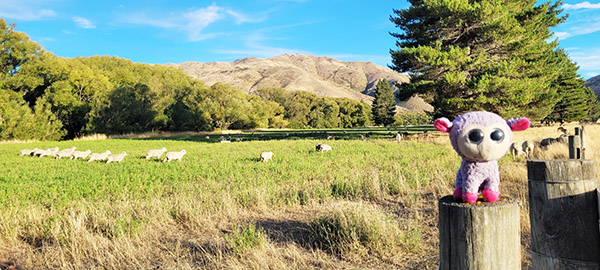
The road was a very tame forest service road with the occasional “Traffic Lamb,” as quite frequently there were herds of sheep and they would part like the Red Sea as they heard Massie’s engine roar grow closer (you can send hate mail for that joke to Joe Berk).
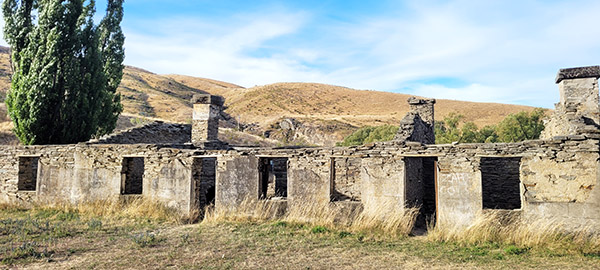
Once I neared the campsite I noticed a couple of old rundown stone buildings (from who knows how long ago) and a few van lifers dispersed around a large field. This was a really cool spot! Not only that, but you had views for miles of the sun beginning to set over the brown grassy mountains that surrounded the location. This was Linda’s Camp. It was an old short term gold mining operation from the 1860s, which switched hands a few times before finally being abandoned in the 1950s. This was an amazing place to camp and it was far off the grid. I didn’t even have cell service.
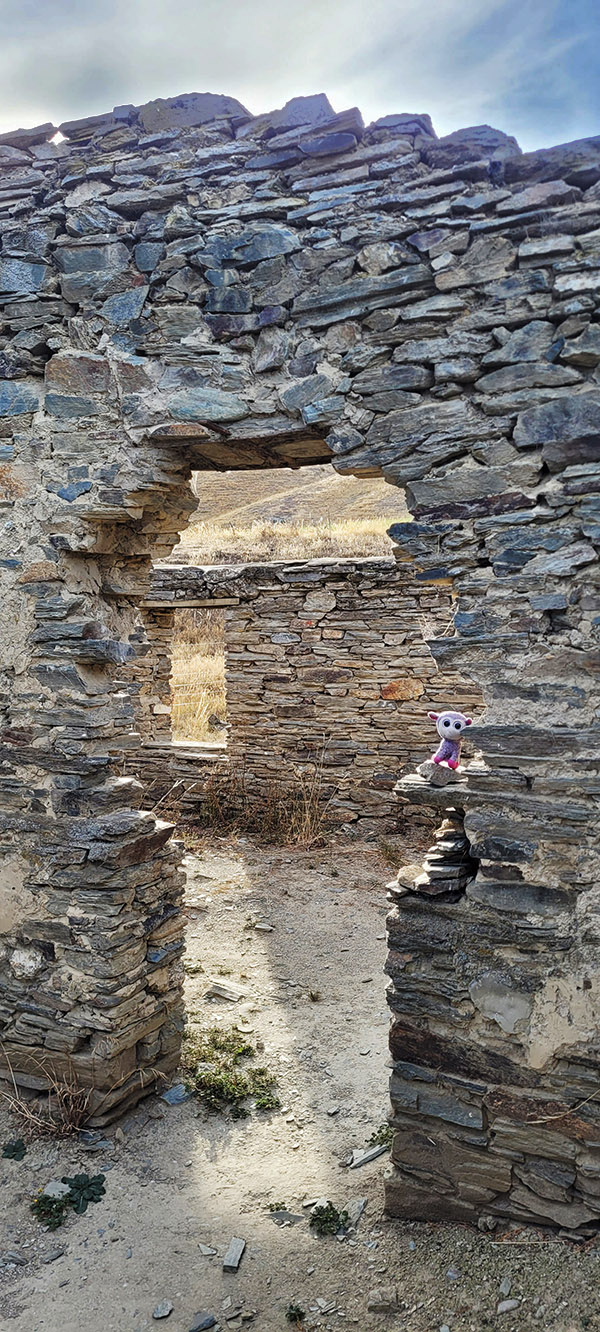
After setting up my tent I struck up a conversation with an old gold miner. He was living in his van there and spent his days panning for gold off a nearby river with minimal luck. He got a good laugh from my story about getting the boot from the coffee shop earlier that day for drying my gear there. The rest of the evening was spent exploring the hotel ruins and a short hike up the mountain to watch the sunset. It was one of those moments where I really was able to relax, breathe, and just be in the present. It was a long but rewarding day and I thought having an early night was in order. It would be another long day tomorrow to include the Hooker Trail hike, which I was greatly looking forward to.

Waking up in yet another serene location with Massie sitting just outside the tent was another perfect kickoff to this new day. Since it was still pretty early, after packing I thought pushing the bike out of the camping area was the proper thing to do to avoid waking any of the van lifers (or the gold miner).
Once well outside the perimeter I went to start the bike. Nothing happened. Shit. The battery was somehow dead. I took the panniers off and attempted to manually jump start it off a small incline. No good. It wasn’t starting. Well, I thought, it was not so funny breaking that “stay on the road rule” now, was it? I had no cell signal either. As I sat down weighing my options (none of which none were good) I heard a couple of pots banging together. The old gold miner was up. I walked over and asked if he had jumpers, and he did! Sure enough, the bike fired right up with his help. Okay, cool I can still make the Hooker Trail even if I am an hour behind schedule. And, the rental company would never know I was off road.
Once I was back on the main road and well on my way, the need for coffee hit me. I pulled into a rest area to see if there was a cell signal to guide me to a coffee shop. There was a cell signal, and there was a coffee shop not too far away. I pulled out and began racing the Linda Pass switchbacks when suddenly all I saw was a huge yellow Scania 18-wheeler coming head on at me. Why was he in my lane? SHIT! I was on the wrong side of the road! In my morning fog, and my distraction from the battery issue I zoned out and drove on the right side of the road. Even with a giant yellow arrow on Massie’s dash as a constant reminder, I somehow ignored the fact that they drive on the wrong side in New Zealand. I didn’t have much time to react and managed to skirt along not so much of a shoulder, but a strip of grass as the truck blasted by me.
That was close. I really didn’t need any coffee after that wakeup call, but what I did need was a moment to get my head back in the game (especially if I was to complete the Hooker Trail and find a campsite). Due to Massie’s moody electrical system, tonight’s campsite would need to be near a town with a strong cell signal. It was still early and my confidence was high. I knew I would satisfy both objectives.
Read the Mike Huber New Zealand posts here:
Never miss an ExNotes blog:

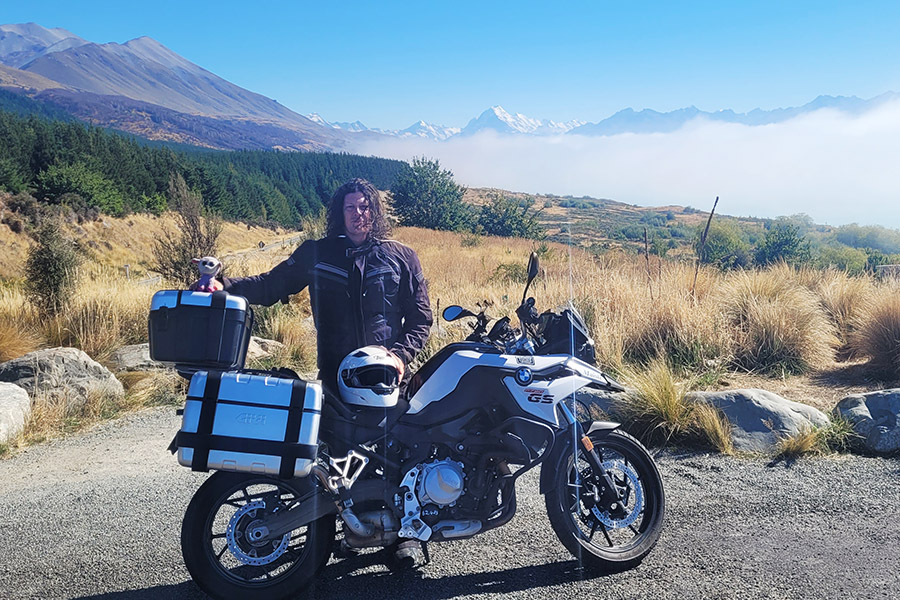

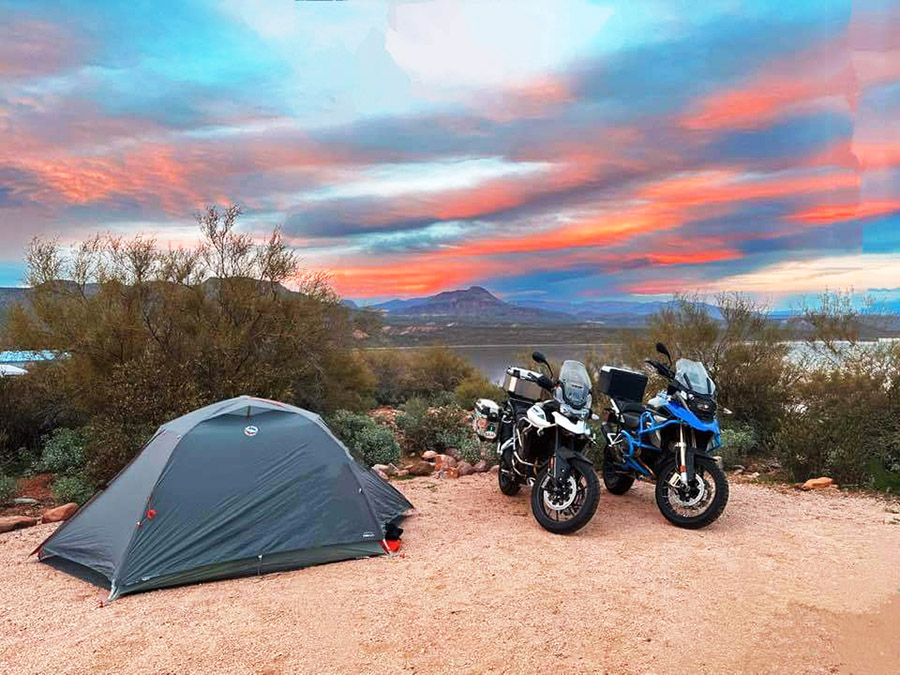
 Arizona has an endless amount of camping areas, both dispersed and in formal campgrounds. I thought highlighting two ends of the spectrum in would be a great way to convey the vast diversity Arizona offers.
Arizona has an endless amount of camping areas, both dispersed and in formal campgrounds. I thought highlighting two ends of the spectrum in would be a great way to convey the vast diversity Arizona offers.
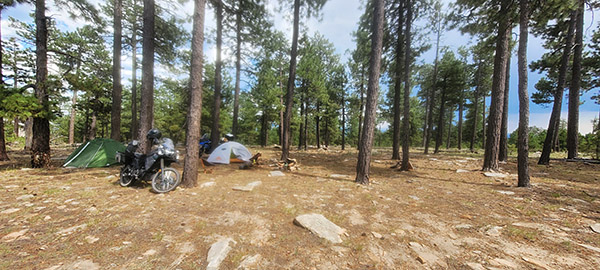



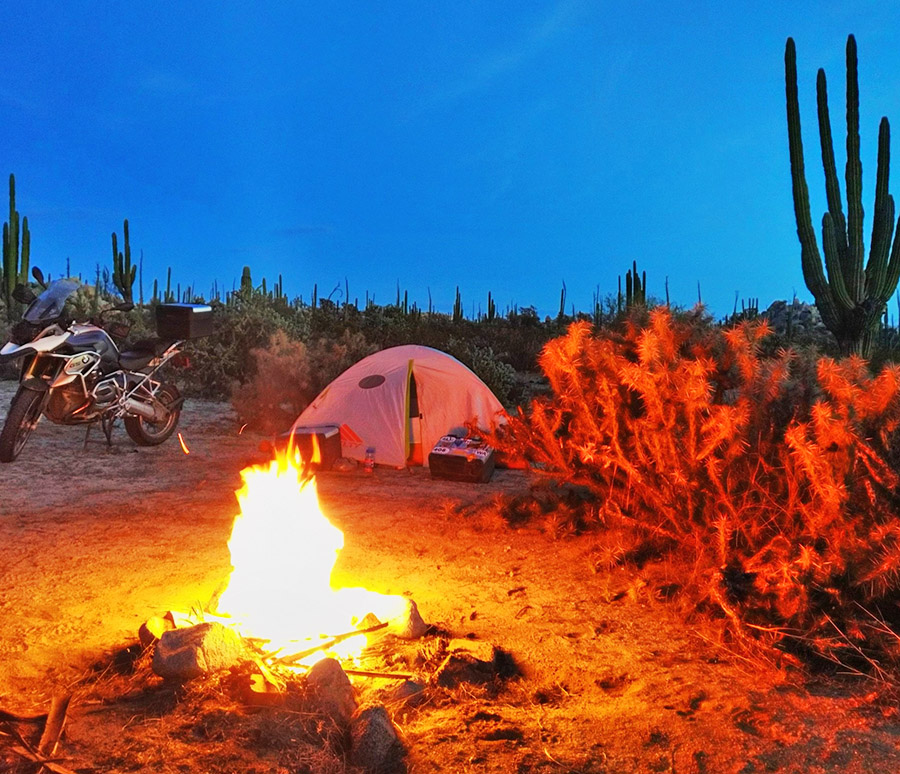
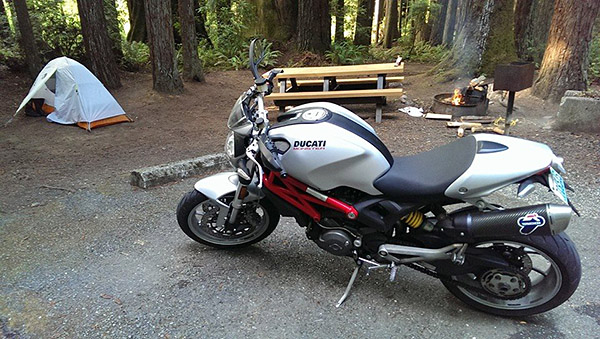
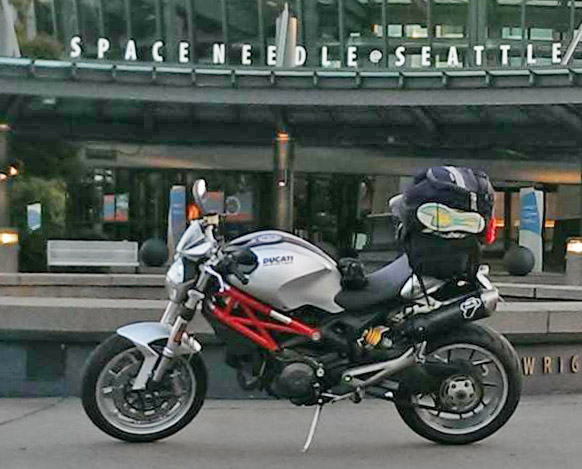
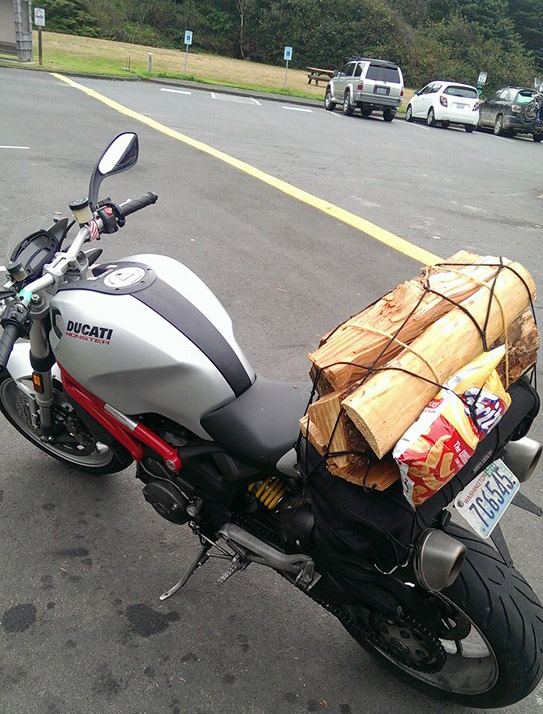
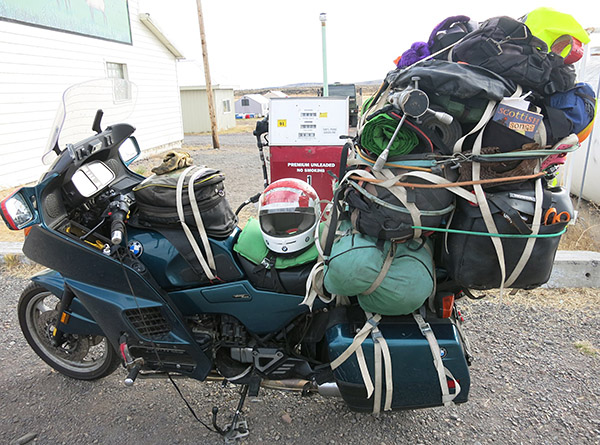
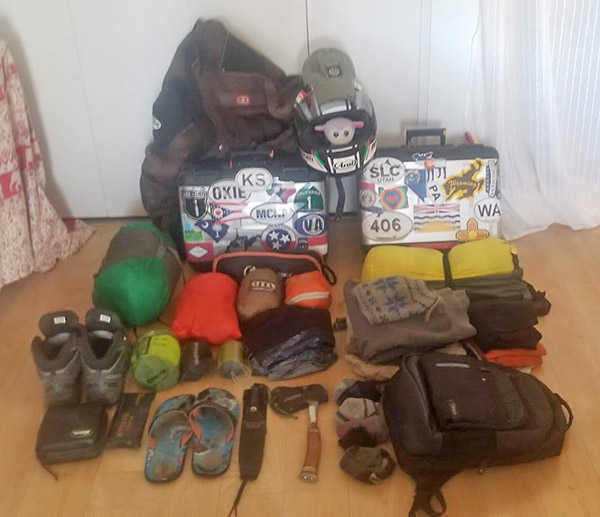
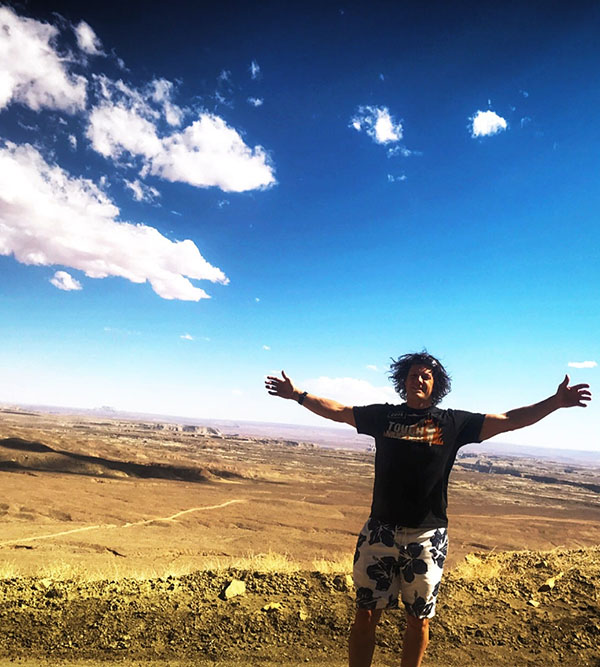

 As I developed my passion for moto camping I began following blogs and Facebook groups to seek out tips and tricks that can make my moto camping experiences more exciting and comfortable. I began to notice that some moto campers on these pages camped in their hammocks full time and didn’t even own a tent. This awoke my curiosity since I always travel with an ENO double nest nylon hammock. On most nights when I camp I usually hang the hammock when I have a few hours to kill where I can get comfortable and read a book or just gaze into the campfire after a long day of riding. Even though I travel and use a hammock frequently I never thought of sleeping in my hammock while camping prior to reading these blogs.
As I developed my passion for moto camping I began following blogs and Facebook groups to seek out tips and tricks that can make my moto camping experiences more exciting and comfortable. I began to notice that some moto campers on these pages camped in their hammocks full time and didn’t even own a tent. This awoke my curiosity since I always travel with an ENO double nest nylon hammock. On most nights when I camp I usually hang the hammock when I have a few hours to kill where I can get comfortable and read a book or just gaze into the campfire after a long day of riding. Even though I travel and use a hammock frequently I never thought of sleeping in my hammock while camping prior to reading these blogs.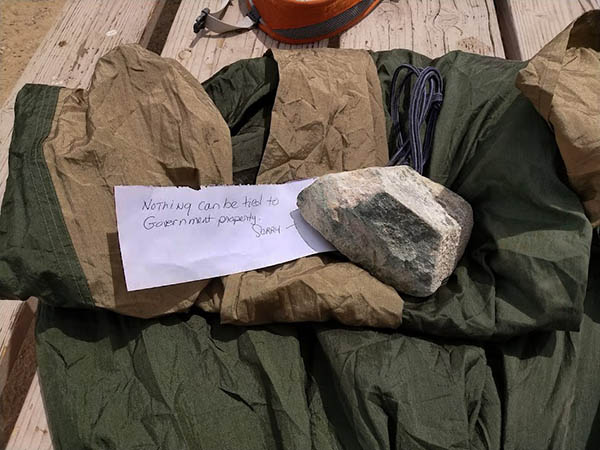 I enjoy the unique experience of hammock camping and whenever conditions are right have continued to camp in my hammock. I am now in the habit of setting up both my tent and hammock at my campsites and go with how I feel, the weather, and my surroundings. Hammock camping is another option to have, and with moto camping having more options is never a bad thing.
I enjoy the unique experience of hammock camping and whenever conditions are right have continued to camp in my hammock. I am now in the habit of setting up both my tent and hammock at my campsites and go with how I feel, the weather, and my surroundings. Hammock camping is another option to have, and with moto camping having more options is never a bad thing.